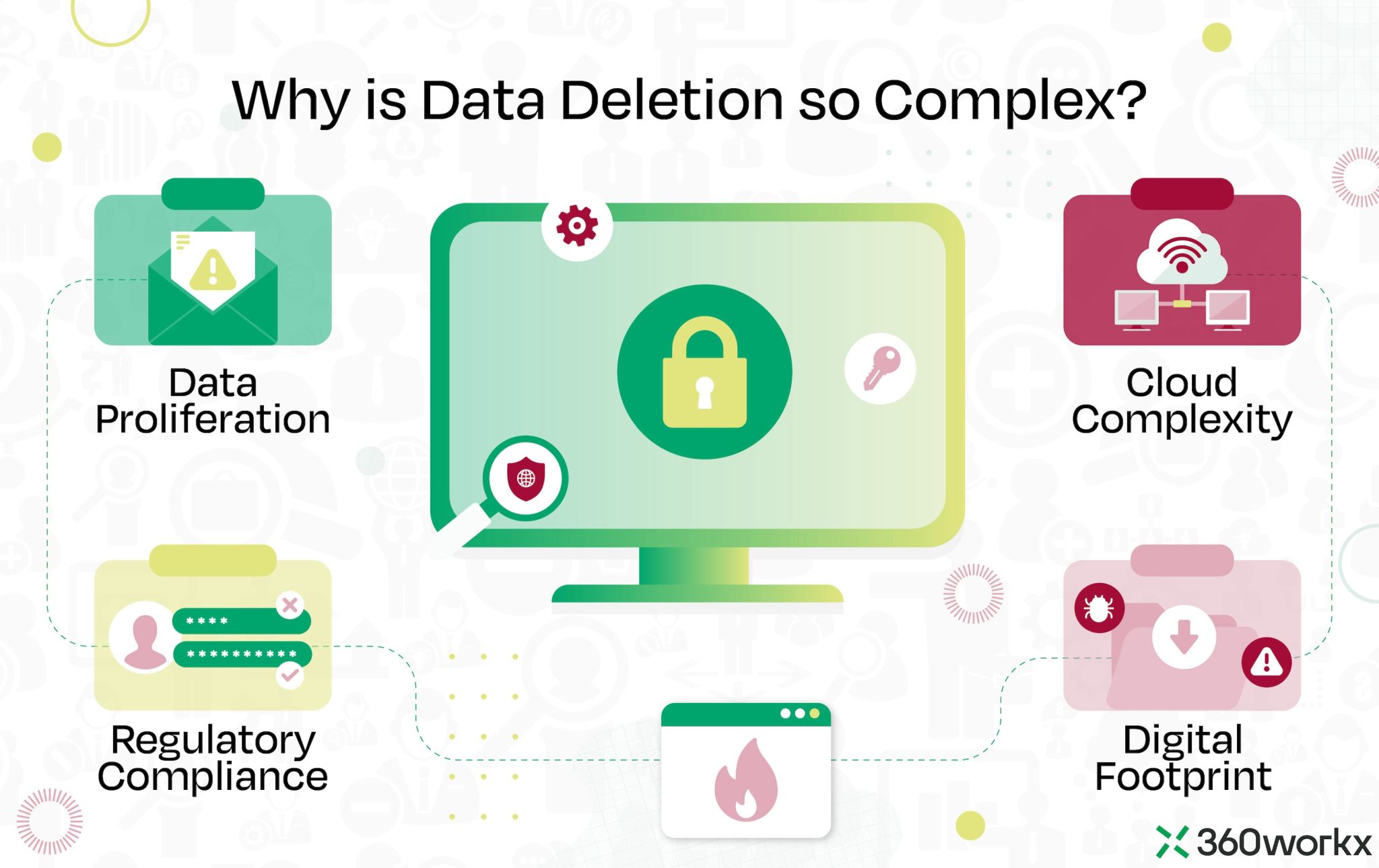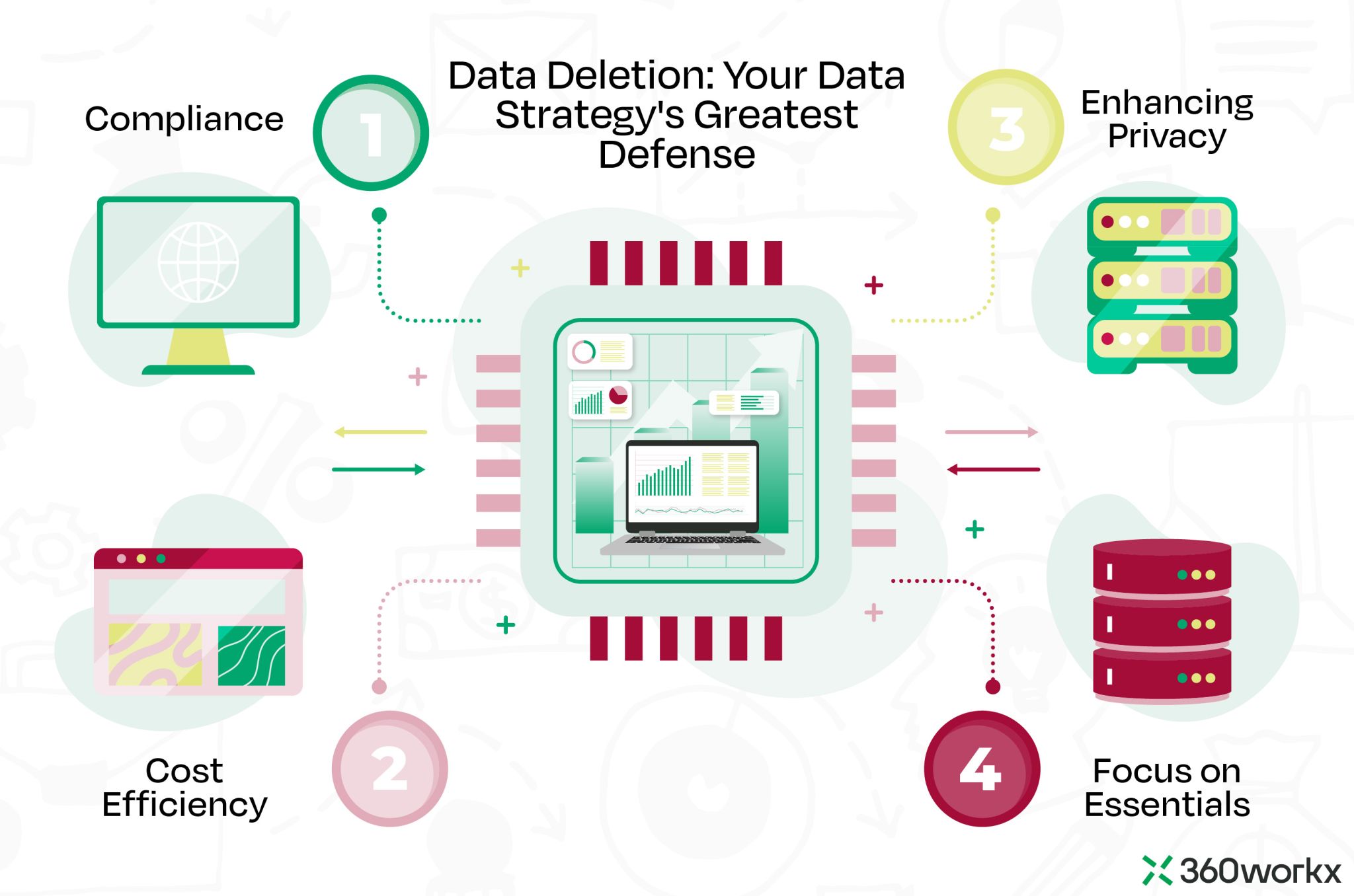In an era dominated by data, organizations and individuals alike face an overwhelming challenge—managing and securely deleting data. While storing and processing data has become seamless, ensuring its proper removal is a whole different challenge. The process of data deletion is far from straightforward due to several key complexities.
Let’s explore why data deletion is such a daunting task:
Data Proliferation
Data is being generated at an unprecedented rate. Organizations operate multiple applications, databases, and cloud services, making data deletion a multi-layered challenge. Ensuring complete removal across all locations requires precise coordination.
Regulatory Compliance
Regulatory frameworks like GDPR, the revised Swiss Privacy Law (nFADP), CCPA, and others have set stringent guidelines for how organizations must handle and delete data. Companies must maintain audit trails, process deletion requests accurately, and ensure data is erased completely. Compliance failure can lead to hefty fines and reputational damage.
Cloud Complexity
With the widespread adoption of cloud computing, data is often distributed across multiple cloud environments, servers, and backups. Deleting data from cloud storage is not always instantaneous—some providers retain copies for redundancy, and different locations may have different policies on deletion timing.
Digital Footprint Challenges
An individual’s or organization’s data exists across numerous interconnected platforms—social media, customer relationship management (CRM) systems, financial records, email servers, and backups. Tracking down and ensuring full deletion across all these touchpoints is a major challenge.
Data Dependencies and Retention Policies
Many organizations have data retention policies that mandate keeping certain records for legal or business reasons. Additionally, deleting one dataset may impact other systems dependent on that data, leading to cascading failures or incomplete deletions.
Automated vs. Manual Deletion Processes
Many organizations still rely on manual deletion processes, which introduce human error and inefficiencies. Automated data deletion solutions, like those offered by Data Privacy Hub, streamline this process, ensuring compliance, consistency, and transparency.
Security Concerns and Data Persistence
Even when data is deleted, remnants can persist in logs, backups, and system caches. Advanced forensic techniques can sometimes recover deleted data, which makes secure deletion critical for organizations dealing with sensitive information.
The Road to Effective Data Deletion
To address these challenges, organizations need a robust data deletion strategy that includes:
- Automated Deletion Workflows – Reducing manual errors and ensuring compliance.
- Regulatory Compliance Monitoring – Tracking audit trails and ensuring regulatory adherence.
- End-to-End Deletion Frameworks – Covering cloud, on-premises, and backups.
- Secure and Verified Deletion Methods – Ensuring data cannot be recovered post-deletion.
As we continue to navigate these complexities, responsible data management is no longer optional—it’s a necessity. Organizations must adopt advanced orchestration tools, compliance frameworks, and deletion automation to stay ahead.
At Data Privacy Hub, we specialize in streamlining the data deletion process, ensuring compliance and security while reducing operational risks.
Schedule a Demo of Data Privacy Hub
Discover how Data Privacy Hub can simplify and automate your data deletion process. Schedule a demo today.



